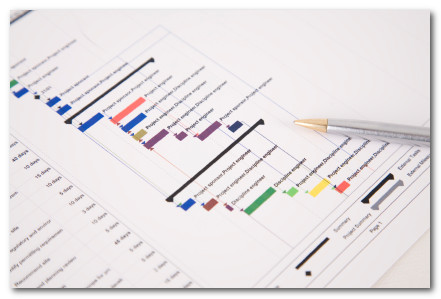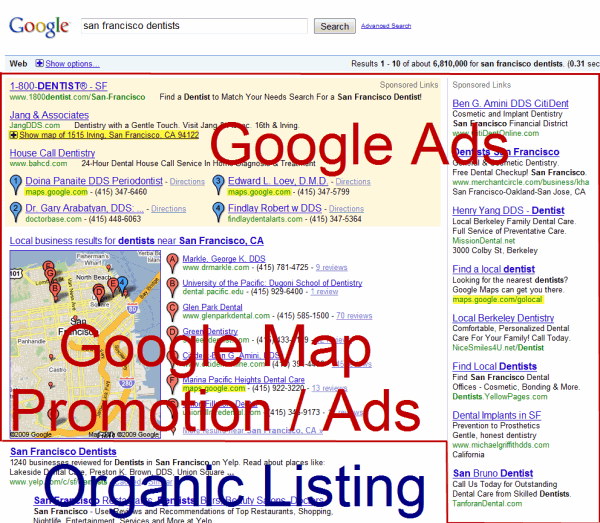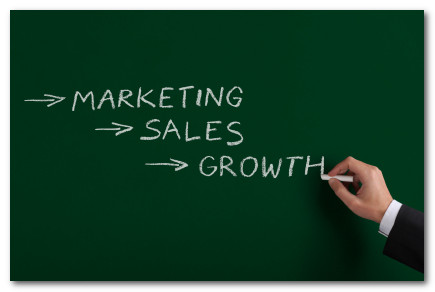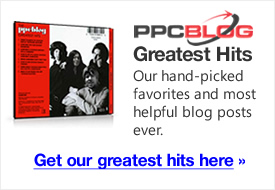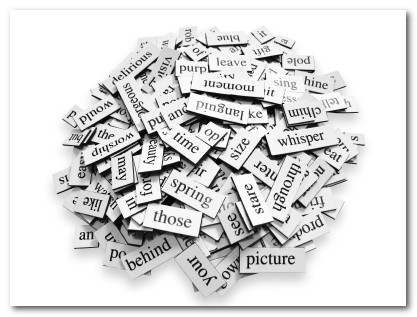
Good copywriting isn’t just about writing.
Good copywriting is the process of convincing someone to take action.
Good copywriters convince a person to exchange their cash for a good or service. A poorly written landing page, however, can earn a back-click. In PPC, there is no click more expensive than the back-click.
Could your landing pages convert at a higher rate with a simple rewrite of your copy?
Let’s look at the proven tricks and techniques great copywriters use to achieve high conversion rates.
1. Become A Product Expert
You probably already have a considerable advantage over a generalist copywriter. You are a product expert.
Product expertise is essential for good copywriting. It is difficult for a copywriter to convey meaning if they don’t truly understand the product they’re selling. If you don’t know your product, take time to learn it thoroughly.
2. Figure Out The Essence Of Your Product
Once you know your product, isolate the essence of the product.
The essence of a product is the reason people should respect and love your product. If people love and respect a product, they are more likely to buy it.
What do you think of when you hear the word “iphone”? Is an iphone a plastic, high-priced pocket-sized PDA made by Apple? That’s a product description, and it is technically accurate, but it isn’t essence of the iphone.
The essence of an iphone is that it is a social tool. It is a membership to a club. It’s a reflection of a set of values to do with simplicity, design and desirability. Oh, and it’s also a phone!
The essence of the product informs the way you write about the product. In the case of Apple, it would grate if they talked about the iPhone in technical terms. Instead, they talk about the iphone in social terms. They use the word “you” a lot. They relate the phone to social and personal situations and applications.
That’s the essence of the product.
3. If You Can’t Get Love, At Least Earn Respect
Getting “Love” is ok for Apple, especially from the fanboys, but what if you’re selling something mundane, like life insurance?
You might not get people to “love” your product, but they should, at very least, respect it. Use testimonials and examples of social proof i.e. images of other people using the product, positive branding, positive news reports, reviews, and other validations that give people a reason to respect your product.
If you can’t convince people to either love or respect your product, there is little chance they’ll pay for it.
4. Know Your Customer
This is an obvious point, and no doubt you’ve heard it a thousand times before, yet it’s surprising how many advertisers answer this question with “people who want to buy my product x”.
Can you visualize your customer? Who are they? How old are they? Where do they live? How much money do they earn? Why are they buying online? Male? Female? Who is a typical customer?
It’s important to know, specifically who your customer is so you can speak their language and set the appropriate scene for selling.
5. Speak The Customers Language
In social situations, we often change our speech depending on our audience. The way we speak to our friends is different than the way we speak to people whom we don’t know. We should pitch our speech to our specific audience on our landing pages, too.
For example, would you trust a Doctor who used the term “Dude” to finish every sentence? It wouldn’t signal authority, which is needed if you’re to trust the doctor!
Consider different market segments have very different value systems and ways of talking. If your customers are baby-boomers, it is more likely than not they will be responsive to appeals to authority i.e. reviews from qualified, professional people and organizations. If your customer is young, chances are they want the talk to be about them and the message to come from someone who is likely to be in their peer group. They are less enamored by authority than those in the baby boomer demographic. If you customer is in the trade, industry jargon will make your site sound more credible. If your customer is not in the trade, industry jargon is likely to confuse them.
There are countless examples of the characteristics of different market segments, but how do you learn your customers language?
Once you’ve identified who your customer is, go to places where your customer hangs out. Amazon reviews, forums, Facebook groups, Twitter. Go to stores. Go to industry seminars. Read consumer reviews. Buy the same newspapers and magazines. Pay careful attention to the use of language. Is it authoritative? Personal? Is the language uneducated? Or specialist? Is the language informal or formal?
6. Identify The Burning Need
People buy something because it solves a problem for them. They have a need. The stronger the need, the more likely you are to sell them your product.
What problem does your product solve? What need, as determined by the customer, does you product fulfill? Speak often about the problem, the solution, the need, and how you address that need.
7. Set The Scene
If you walk into a car sales room, what do you see? Gleaming cars. Bright lights. Reflective chrome. It’s like a giant-sized, glittering jewelry box. This is scene setting. It makes you feel like buying, more so than if you walked into a dim, messy basement with cars covered in dust. The scene matches your expectations.
Keep the same thing in mind when crafting a landing page. If you sell based on discounted price, then your page should look like a discount flyer. Highlight prices, prices crossed out – typically in red – and the new bargain price featured prominently. If you sell based on high value and desirability, you page should be more sober. Clinical. Less circus, less shouty, sedate. Price is seldom mentioned. If you’re selling something for a million bucks, your pages should look a million bucks.
People will get an immediate feel for the scene. If the scene is dissonant i.e. you use a sober, high value approach when the visitor is expecting a discount i.e. your Adword text might have indicated low pricing, then you may lose a click. A dusty, messy car showroom would feel dissonant because the scene setting is not what the audience expects.
8 Notice I Haven’t Talked About The Mechanics Of Copy Writing Yet?
🙂
9. Only Once You Understand The Product, The Market, The Customer, And The Need Should You Start Writing
Write the first draft quickly.
Typically when we write, we have two competing voices in our head. One is the creative voice imagining what words to write next. The other is the editing voice, the voice that worries if the sentence reads well. Combining writing and editing is a slow cumbersome process and can make your copy sound stilted.
It’s better to separate those two functions out.
Write as fast as possible without editing, even if what you’re writing is gibberish. When you’ve finished your page, take a break, and then edit. It’s much easier to reduce than to produce.
Tip: When you edit, try removing the first paragraph. Make your second paragraph your first paragraph. I’ll bet your page reads a lot better.
10. All Page Elements Have One Function
Headings, sub-headings, pictures, diagrams, copy, logos, buttons and layout. What function do they all have in common?
The common function is to get the visitor to read the first sentence of the copy.
The first sentence is the place we are all conditioned to start. The first sentence is the gateway to everything else on the page, so it needs to be compelling. What’s the best way to make it compelling? Keep it short. Short sentences suck people in. They are easy to digest.
So what’s the purpose of the first sentence?
To get visitors to the second sentence.
And the function of the second sentence?
To get people to the third.
And so on.
Traditional copy writing manuals tend to say that the purpose of each sentence is get you to read the next sentence, which is true, however we need to be careful when translating this idea into an online environment.
Online, people don’t tend to read linearly, at least not for long. They scan. For this reason, paragraph headings become even more important than in print. If people don’t find what they’re after in the first two or three sentences, they tend to scan to a point that does interest them.
Compare a print magazine page to a web page. Notice how dense the print layout looks. Ensure your landing pages are less dense than a magazine page. Break up your copy into headings, bullet points, images, video and other elements that are easy to scan.
11. Create Harmony
This is an old sales technique, but still works a treat. The aim is to get people to agree with you regarding a series of minor, obvious points. This puts people into an agreeable frame of mind leading up to the point where you ask for an order.
When writing, aim for that same reaction.
Make sure you first paragraph includes a couple of points that are generally true and therefore easy to agree with. People will be a lot more responsive to your sales message if they agree with it.
Be honest. If something you say is factually wrong, you run a high risk of losing people. Speak essential truths your audience will deem to be self-evident.
Your voice should be consistent. Don’t jump around between the personal and impersonal voice, or the formal and informal. It doesn’t ring true. When you read the copy aloud, does it sound like you? If it doesn’t, rework it until it does.
It will sound “true-er”
12. Fall Towards Desired Action
Everything you write must progress the reader to desired action.
The reader should be able to read and scan down to a desired action. Nothing should be superflous or confusing or get in the way of this graceful, downwards momentum. Each concept must build on the next.
Use curiosity to advance people through the copy.
13. Curiosity?
Want to see a copy of all the pager messages that were intercepted in New York on the morning of 9/11?
Are you reading this sentence in the hope I’ll show you?
Really?
Ok, here 🙂
Arousing curiosity is the most powerful way to pull people down into your copy and keep them reading until they get to the desired action. All landing pages are stories – the reader should always be cusrious about “what happens next”?
This never happens in corporate reports, which is why corporate reports go unread.
14. Test & Retest
The above points have a “truthiness” quality about them, huh. But how do we know they really work?
First of all, this copywriting theory has stood the test of time. If it didn’t work, it wouldn’t still be used.
Secondly, and most importantly, testing is essential to the copy-writing process. If one style of copywriting fails with your audience, then try another. The best copy is arrived at through rigorous testing and iteration.
The online advantage is that testing is easy. Run copy for a few days and look at the results. As you don’t pay for printing costs, it’s easy to tweak, adjust and restest. Copy that doesn’t convert isn’t good copy, no matter how many guidelines we follow.
15. “Steal”
Ok, perhaps not steal. Borrow some ideas 🙂
While every project is unique, many of the same conversion and copywriting concepts apply to all projects. Here are some master-class examples of copywriting and landing page conversion in action:
- Conversion Rate Optimizer Blog – contains some great case studies of landing page optimization.
- Copyblogger – scroll down for landing page makeovers.
- Marketing Profs – requires a free login to access some articles, but worthwhile. Take a look in the “Landing Pages” and the “Copywriting” categories.
- FutureNow – a collection of white papers on conversion.
Mix and match ideas, test what works, and keep pushing further into doing more of whatever is working well for you. 😀



